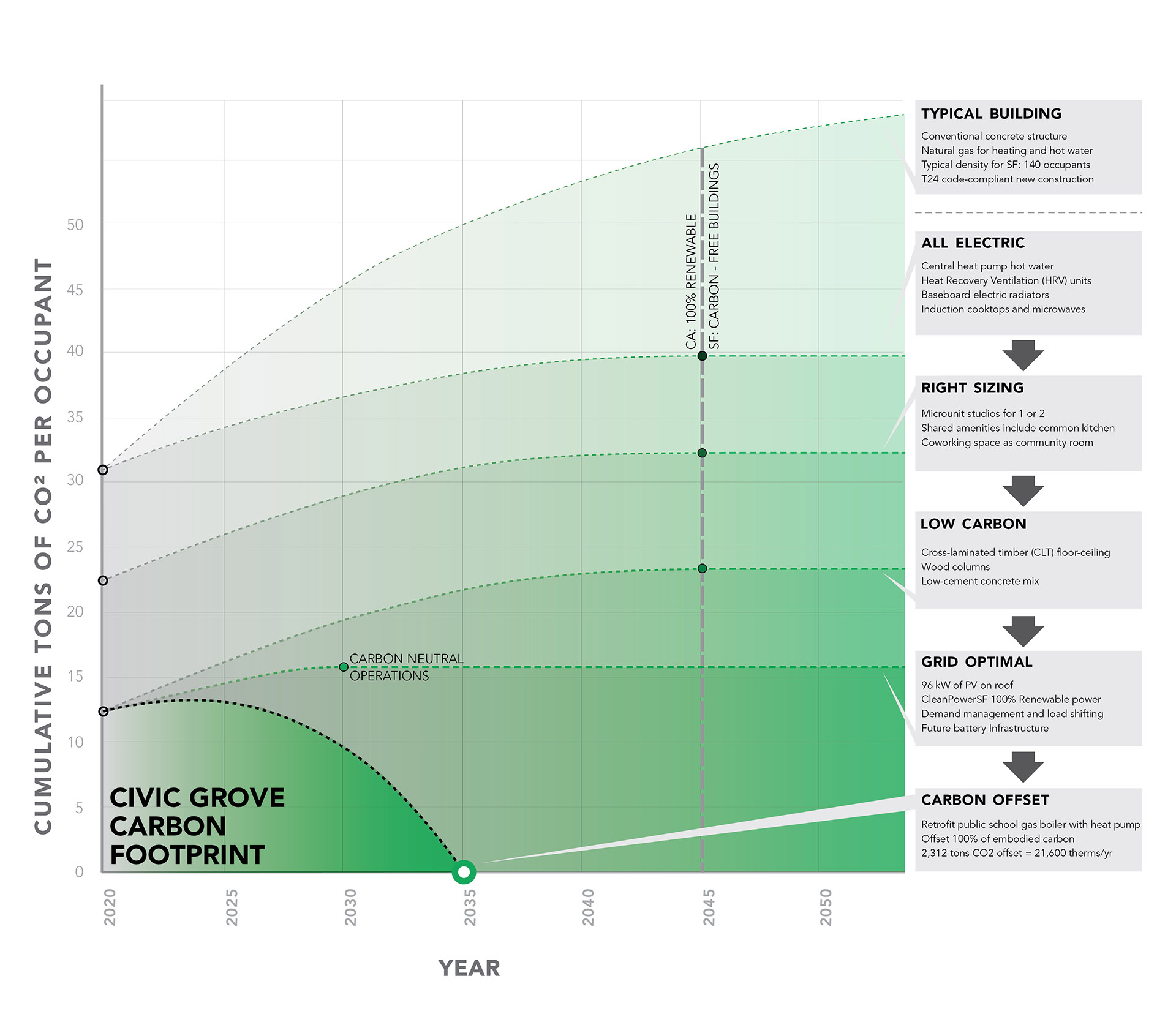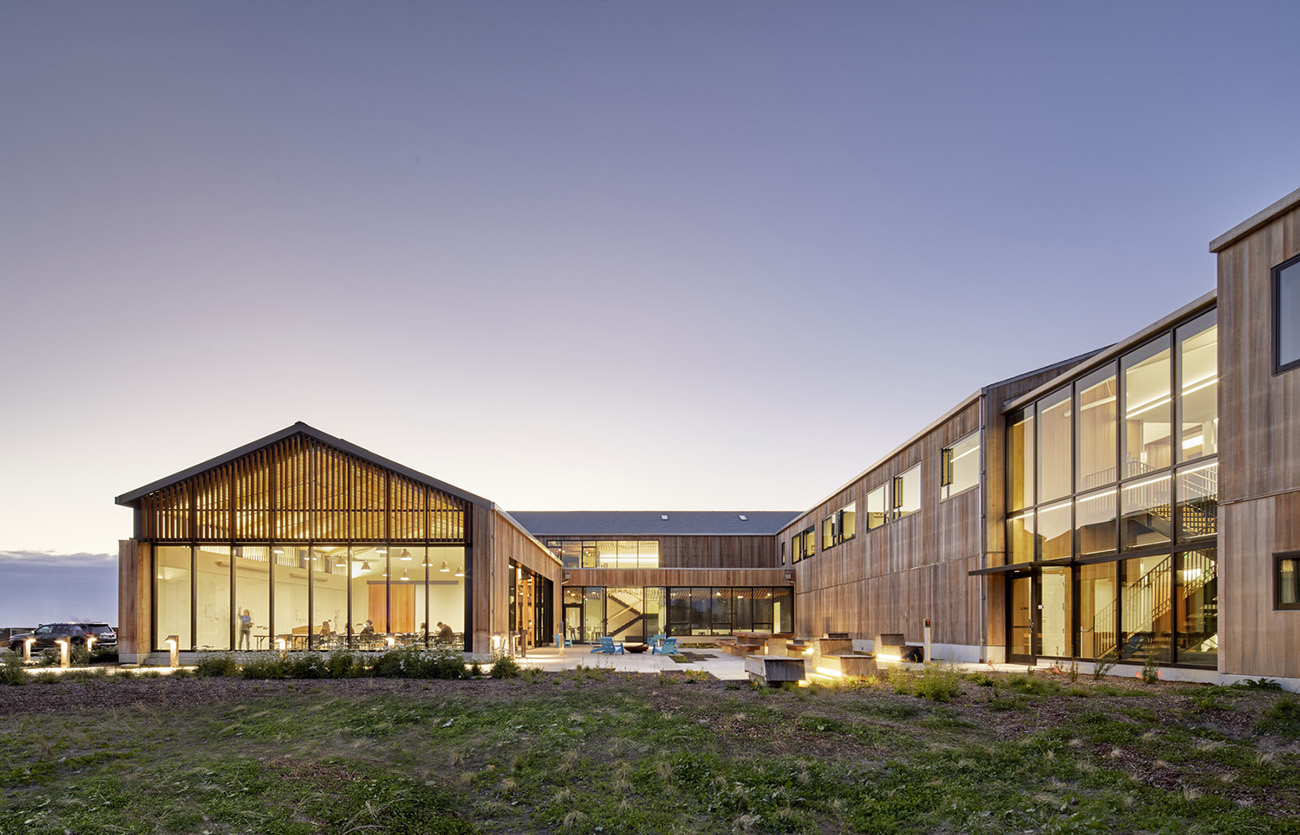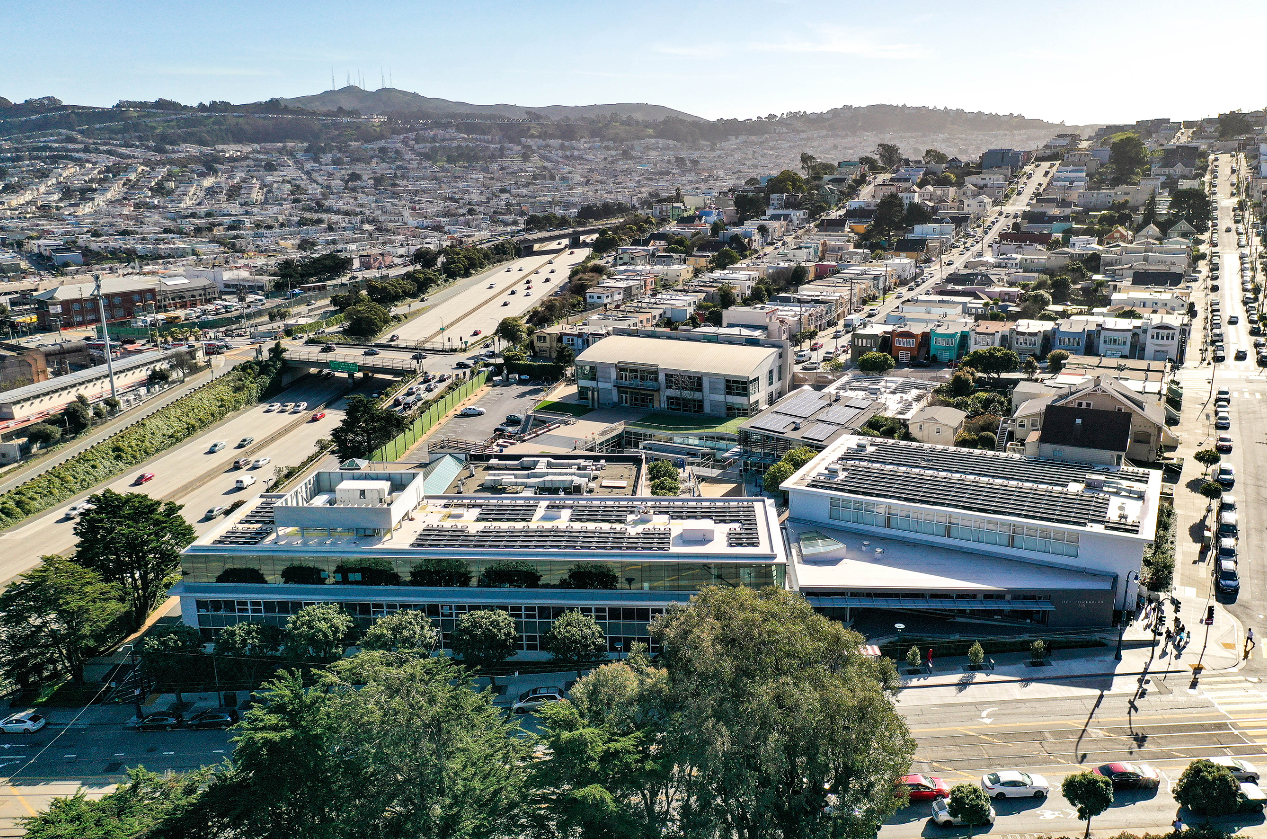Climate Positive: Design and Advocacy

Some say it is too early to focus on anything but COVID-19. We say this is a once-in-a-lifetime opportunity to refashion our work, and our lives, towards a vision of a better world. We will pick up the pieces: how we put them back together is up to us.
We are struck by the parallels between COVID-19 and our larger, slower-burning Climate Crisis, by the consequences of inaction in the face of science, of underfunding vital research, of insufficient and slow response. In light of the urgency for action commensurate with the scale of the climate change challenge, and the need for a clear vision for the built environment moving forward, EHDD is committing to advancing what we are calling Climate Positive design across our portfolio.
Debra Roberts, the IPCC Co-Chair, warns us that “the next few years are probably the most important in our history… Limiting global warming to 1.5°C require rapid, far-reaching, and unprecedented changes in all aspects of society.” The challenge is one of speed and scale. A few exceptional buildings by elite firms will not get us there. We need strong policies, transformative innovations, and replicable approaches that lift all boats.
Our vision will be advanced in concert with our clients and collaborators towards the ultimate goal of a built environment that is genuinely Climate Positive by 2030. If EHDD’s portfolio can get there by 2030, we hope California can do so by 2040, and the rest of the US by 2050. To say this is ambitious is a grand understatement: it is the most significant transformation since the dawn of the industrial revolution.
Here is our opening salvo in five parts:
- No on-site fossil fuels
- Maximize efficiency and PV
- Design to use energy when it is clean
- Reduce concrete and steel impacts
- Design systems and landscape for carbon sequestration
- Seek profound material innovation
- Design transformation for existing buildings
- Avoid new embodied emissions
- Retrofit for high performance
- Recognize the risks of a changing climate
- Design robust, passive, localized systems
- Integrate battery-PV in microgrids
- Advocate for all-electric codes
- Speed and scale are essential
- Support advanced policy through a real-world perspective
- Partner with allied organizations
To execute on this vision, here are three of the key actions we are taking right now:
Perform carbon assessments on all of our projects
As an industry, we are where we were roughly ten years ago on energy modeling. At that time, very few knew what an EUI was let alone if 25 or 250 kbtu/sf/yr were good targets for an office or lab building. Today we need to understand the actual carbon impacts of our buildings, no matter where the carbon originates. We need to build literacy around what big levers exist and how operating and embodied emissions compare. You can only manage what you measure.
Focus on radical reductions in structure-based emissions
We will continue our encouraging work on mass timber and ultra-low cement concrete while partnering to explore new structural solutions and breakthrough innovations that we sorely need. These up-front emissions are our most significant opportunity to take big leaps immediately when we need it most.
Advocate to advance all-electric codes
Over the past two+ years, we have spent many nights attending city council and planning commission hearings, explaining how our industry is ready today for ALL buildings to be run on clean electricity. Our local political leaders are looking to us for advice and guidance on how to reach decarbonization goals that are effective and equitable. We ask you to join us in publicly advocating for new codes and policies to quickly transform the built environment.
Join us in creating a better future. Let’s aim higher than simply a return to the way things were.
Image References
- EHDD graphic
- EHDD graphic from C40 Reinventing Cities Competition
- UC Santa Cruz Coastal Biology Building photographed by Michael David Rose
- Lick-Wilmerding High School photographed by DroneBase
Image Captions
- EHDD is committed to a Carbon Positive future
- EHDD reached carbon neutrality on its C40 Reinventing Cities competition entry through a life-cycle approach to both embodied and operating carbon. A stepping down from baseline to design case led to full carbon neutrality 15 years after occupancy.
- A wood exterior at the LEED® Gold UC Santa Cruz Coastal Biology Building sequesters carbon while avoiding the use of energy-intensive cladding materials like aluminum or concrete.
- Lick-Wilmerding High School is committed to net-zero energy use. The ultimate goal is for the special features of the project to educate the users and make them more aware of sustainability and equity issues beyond the building or campus itself.



